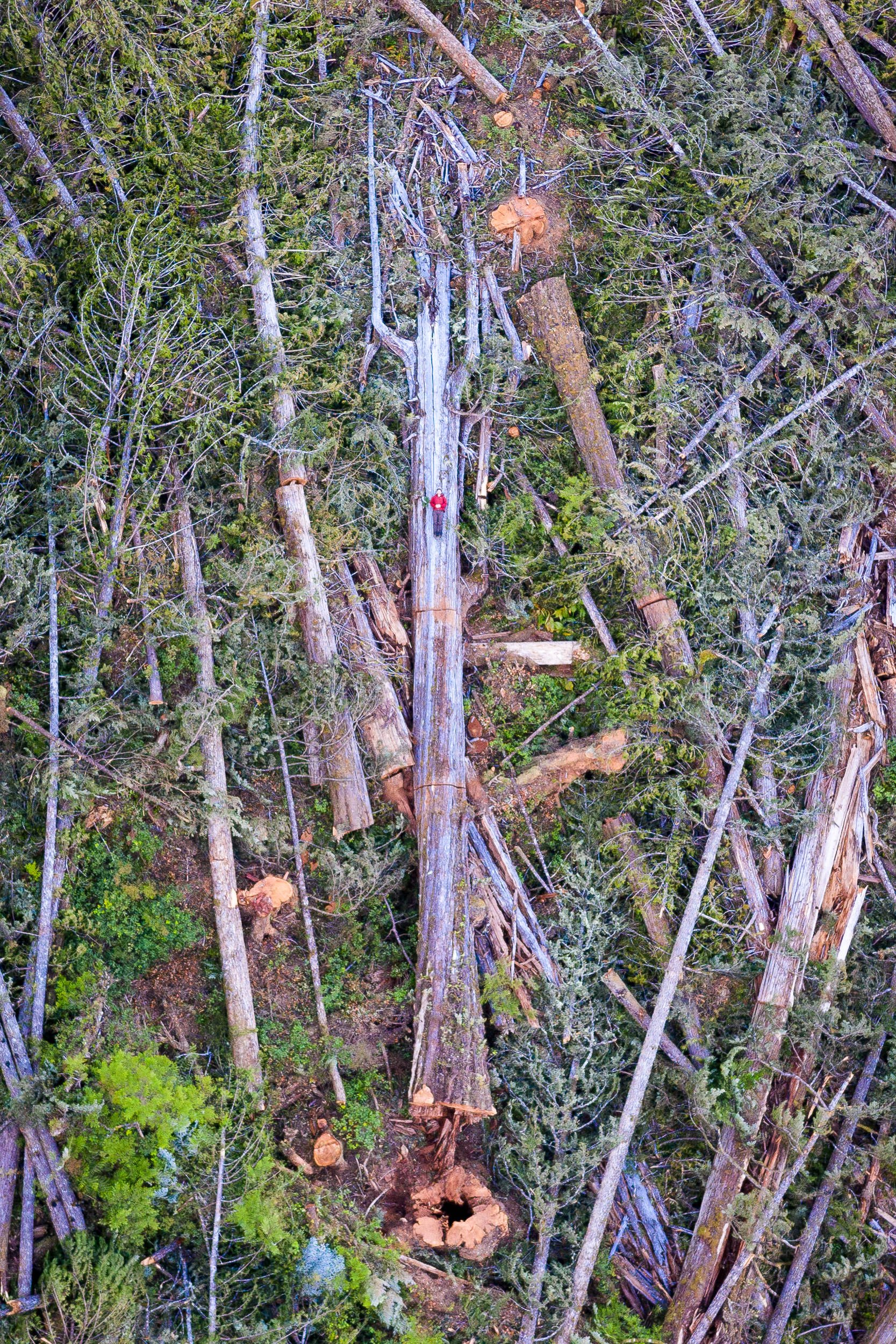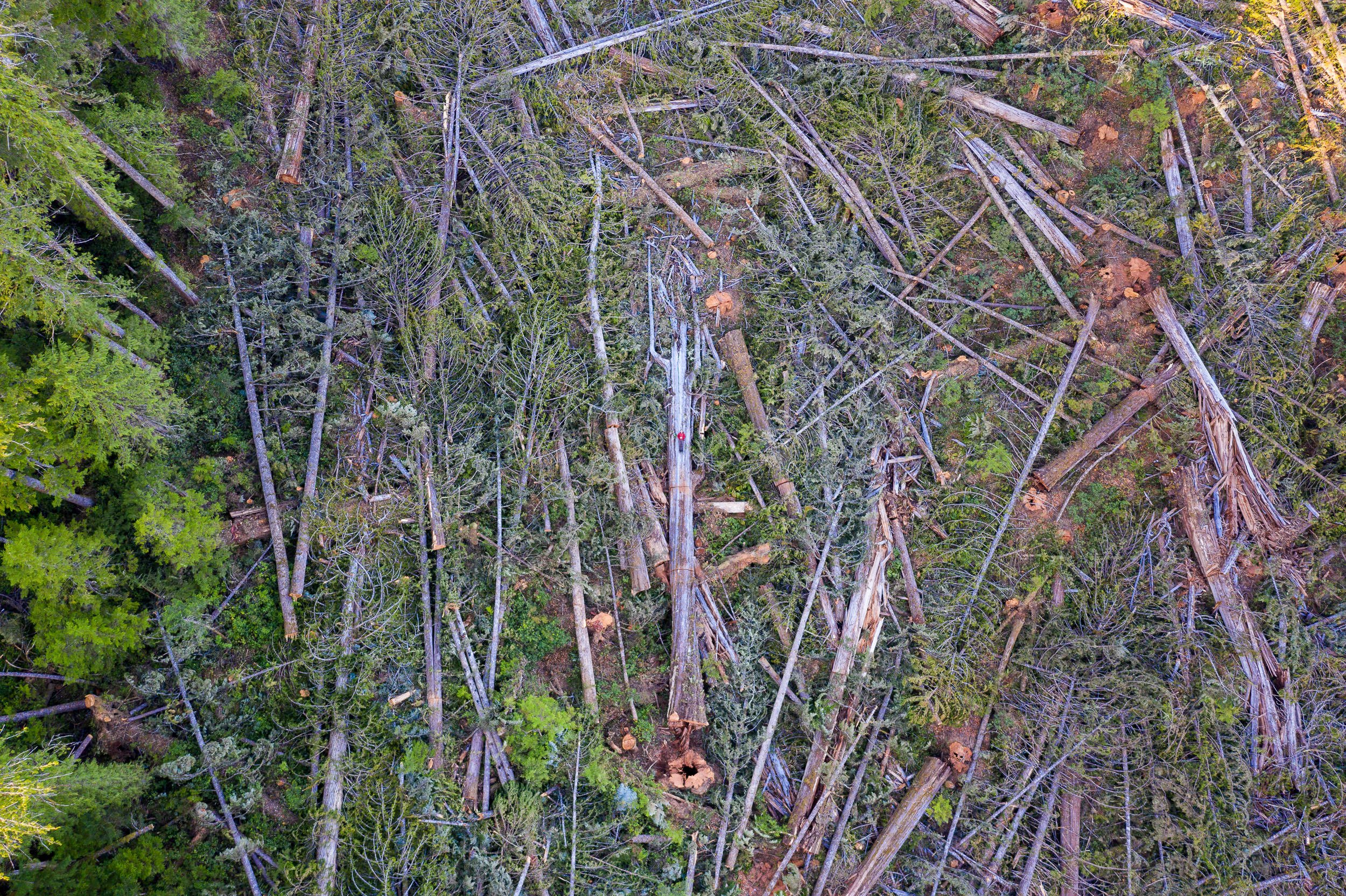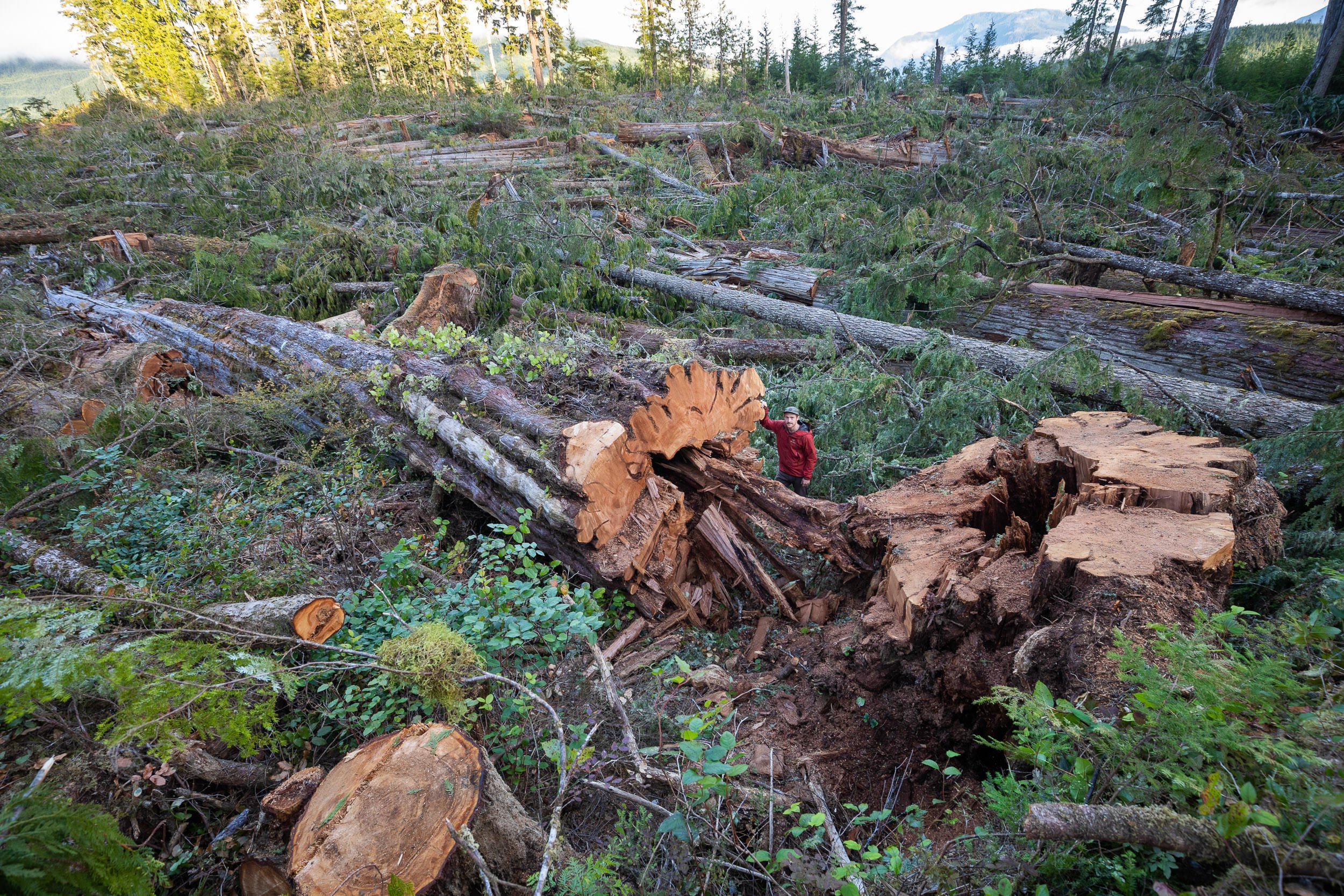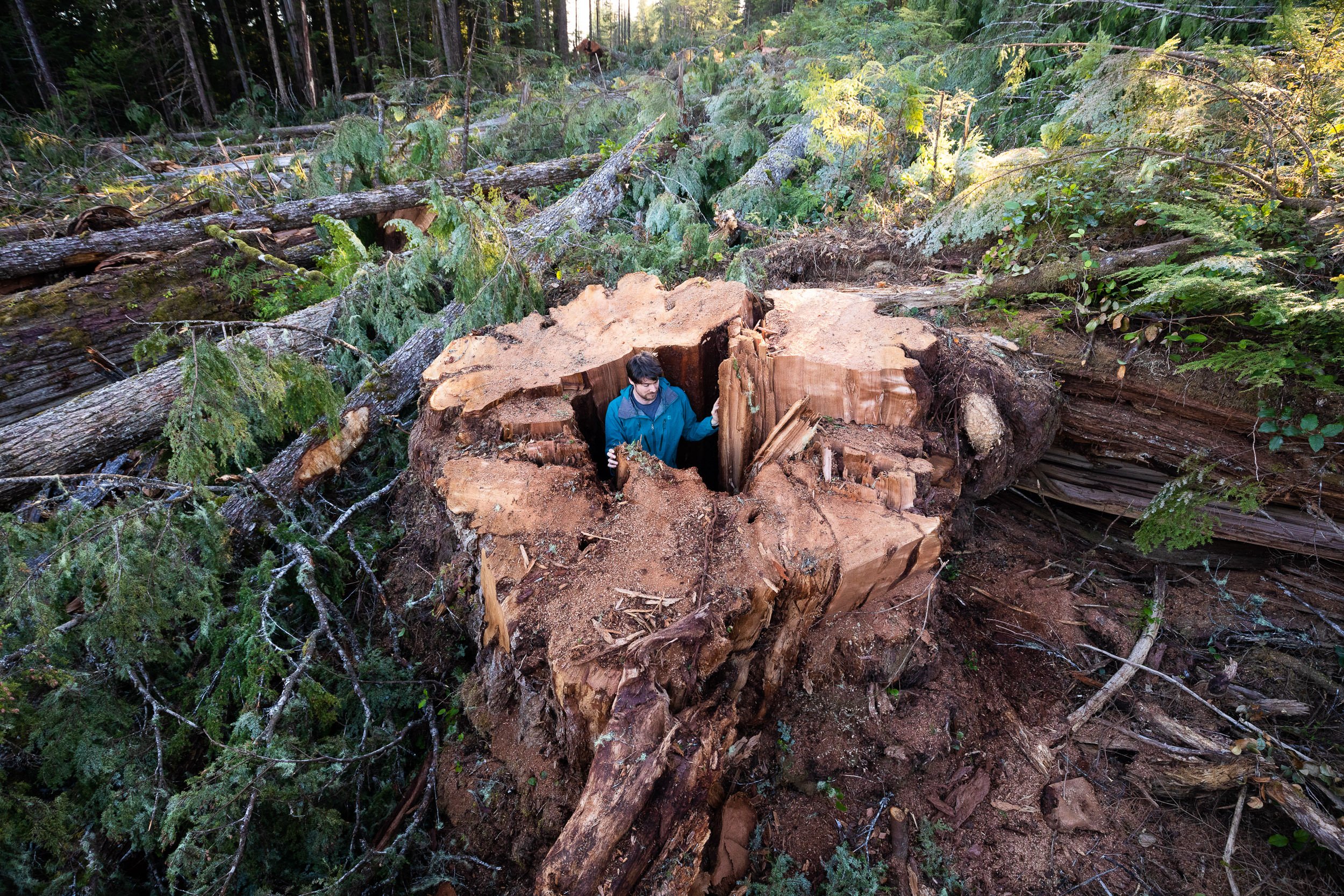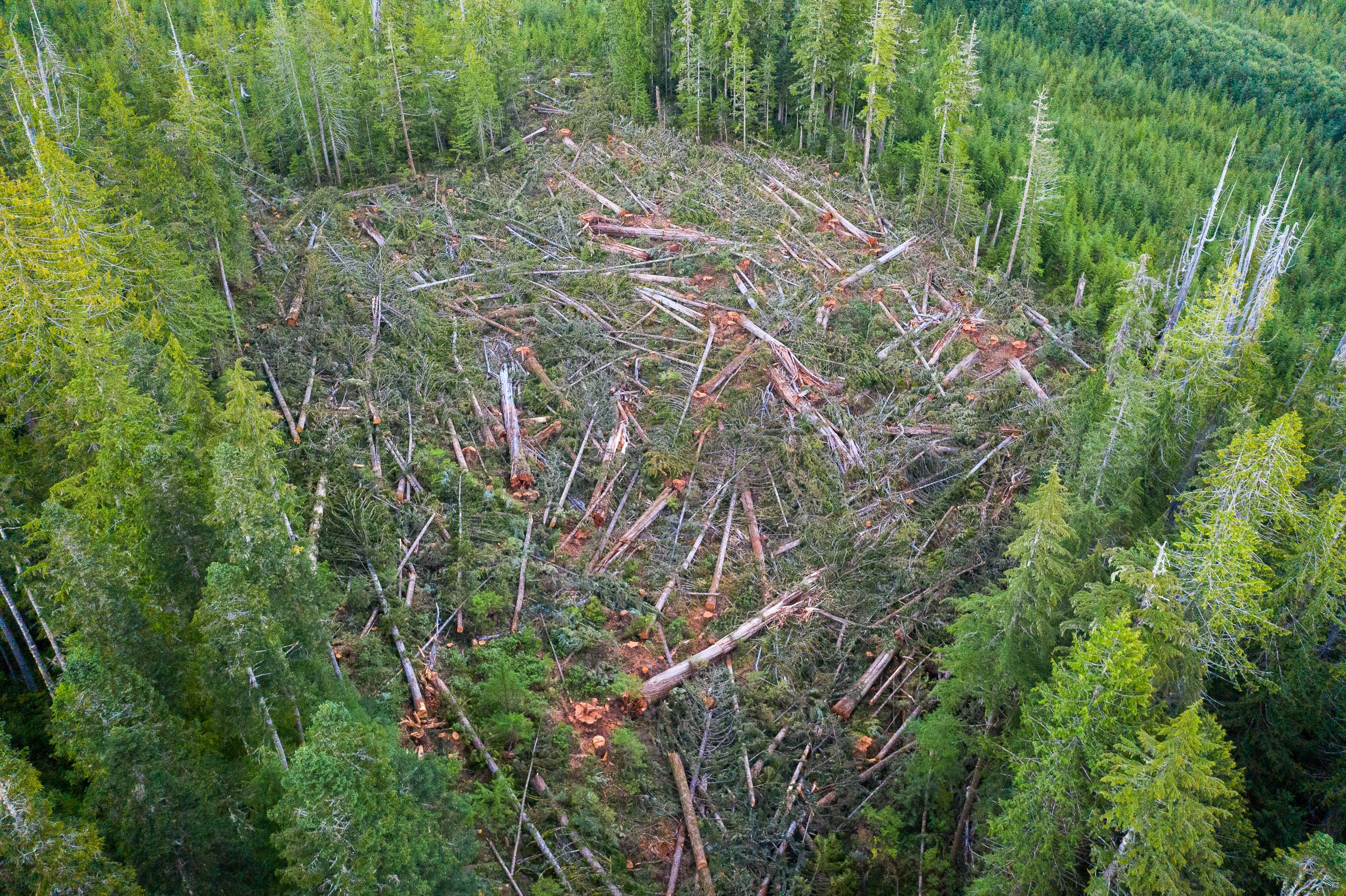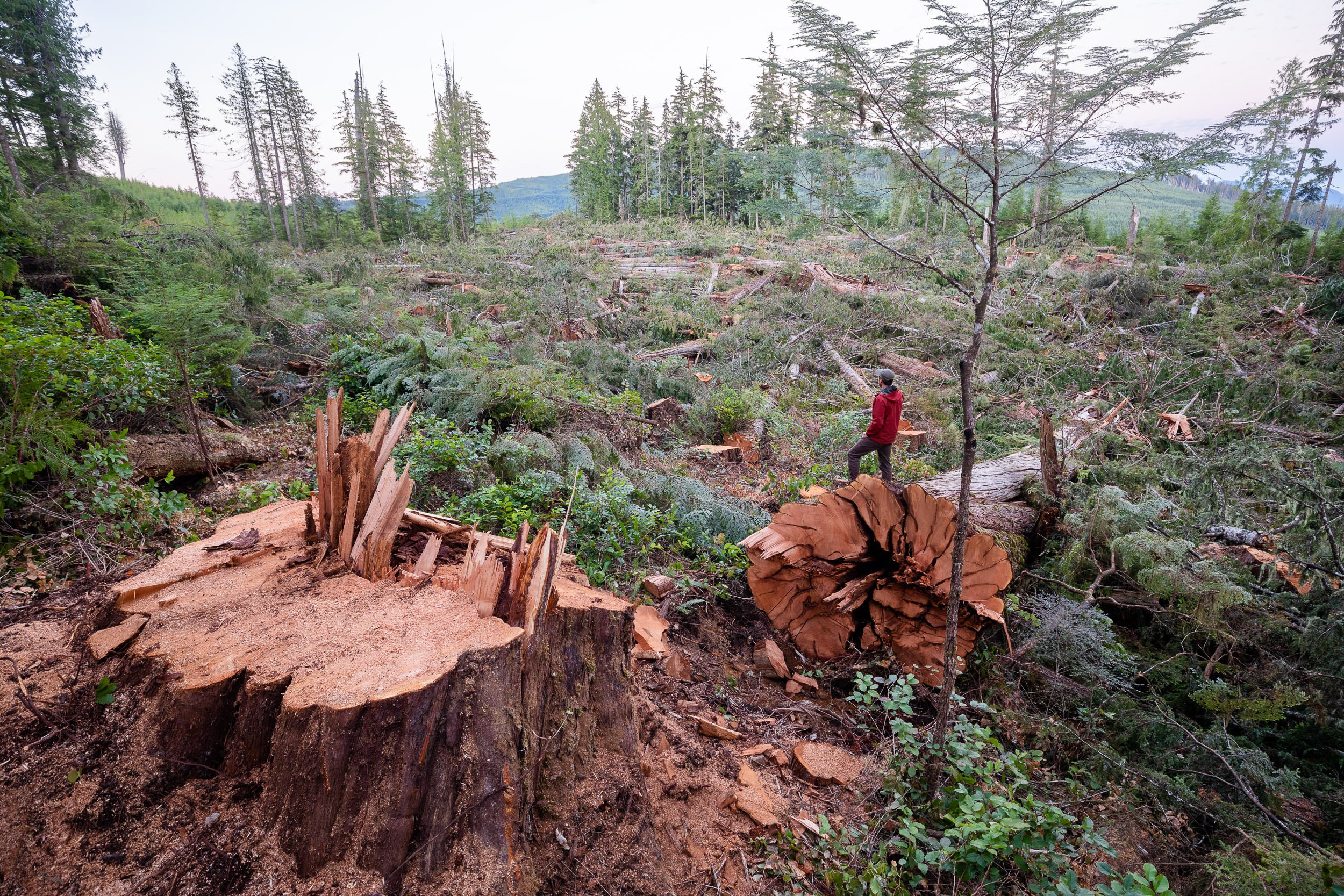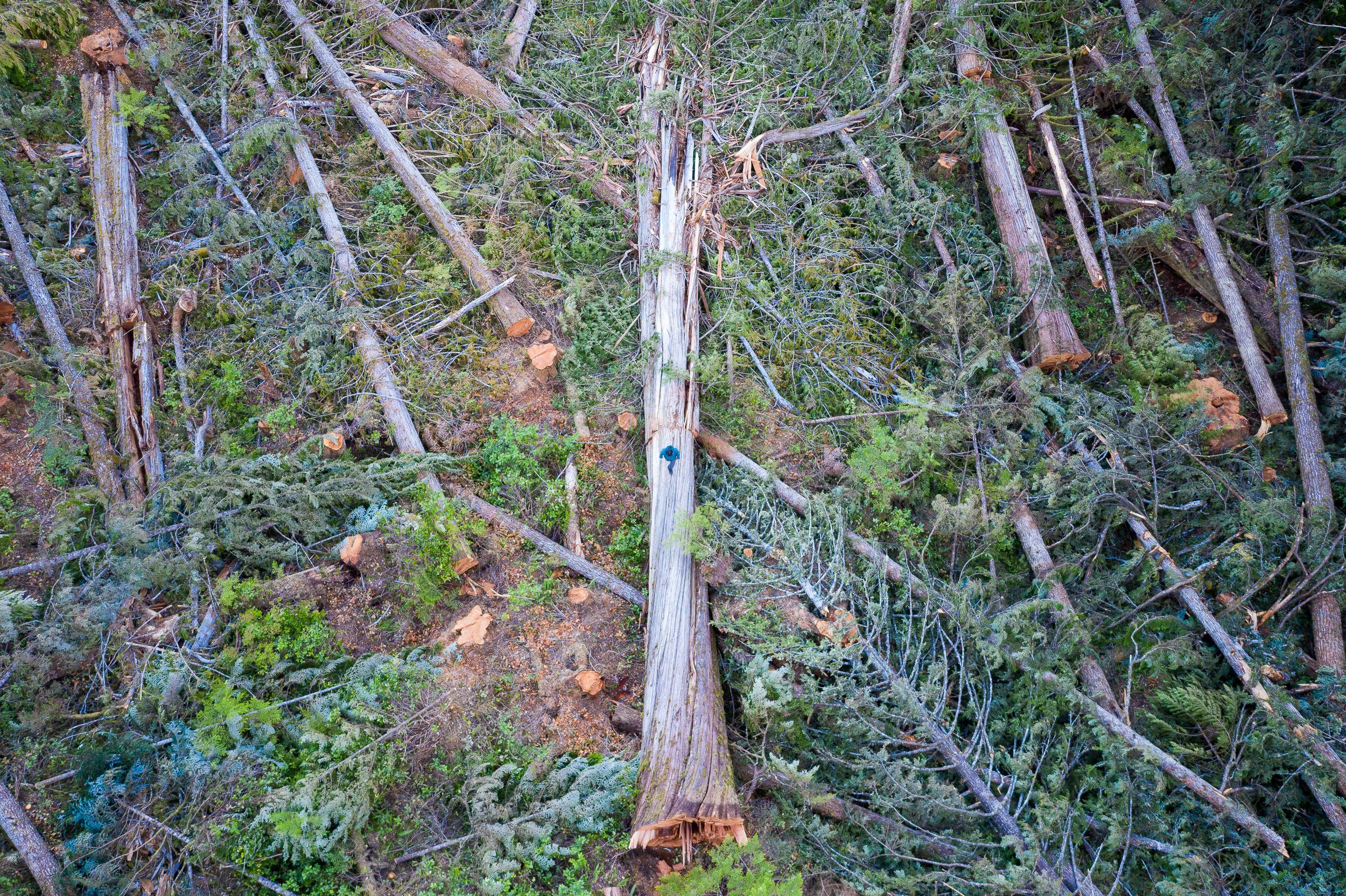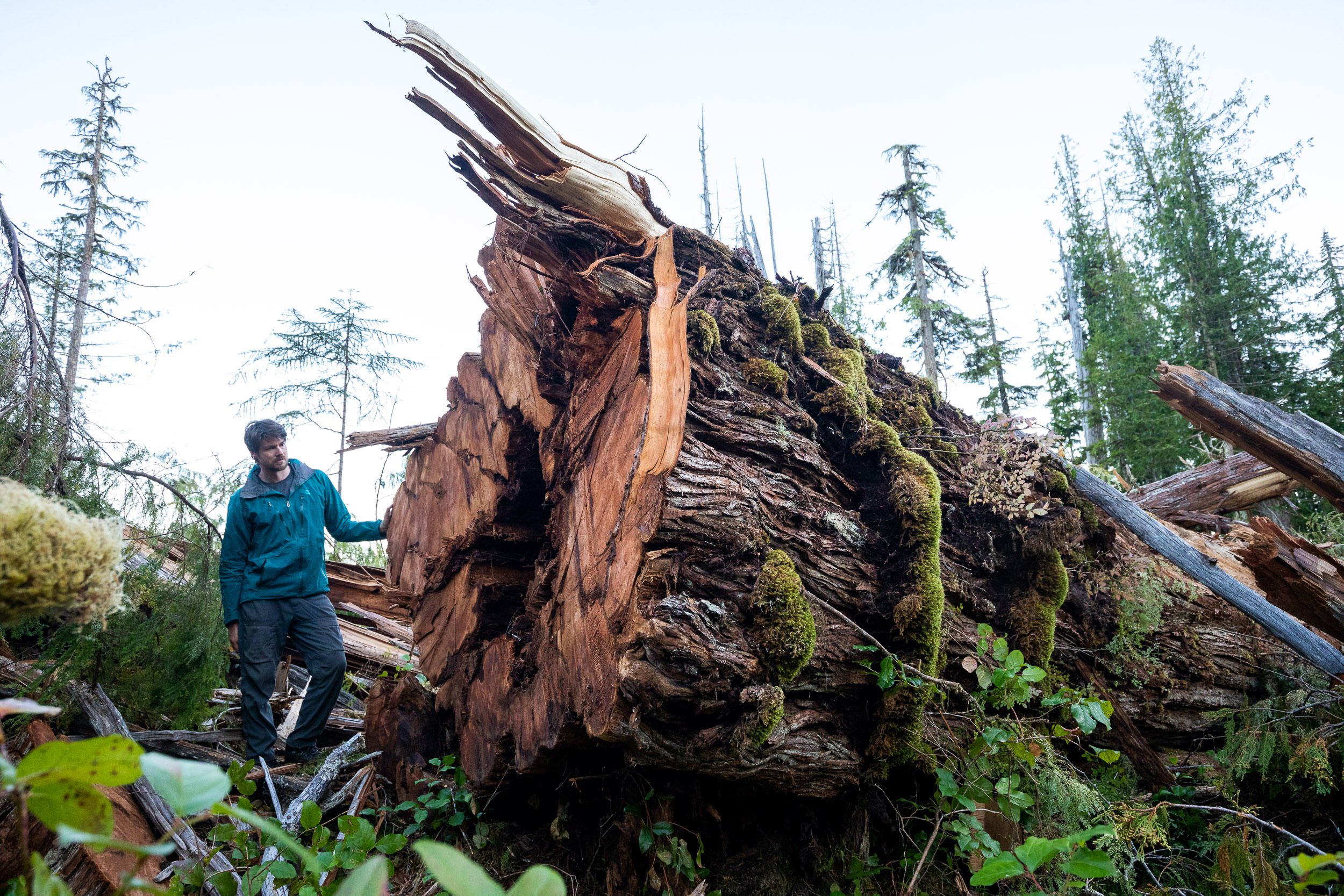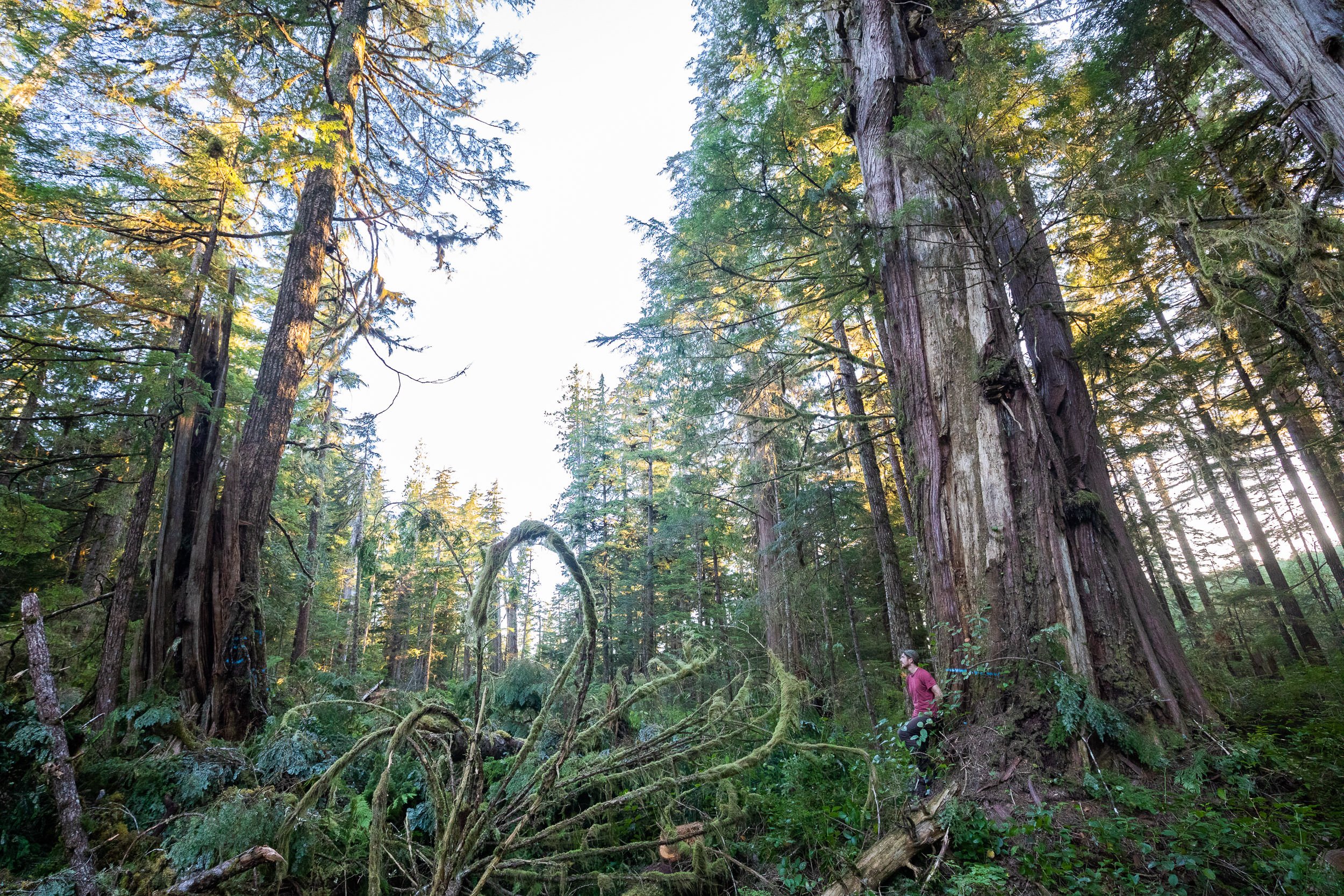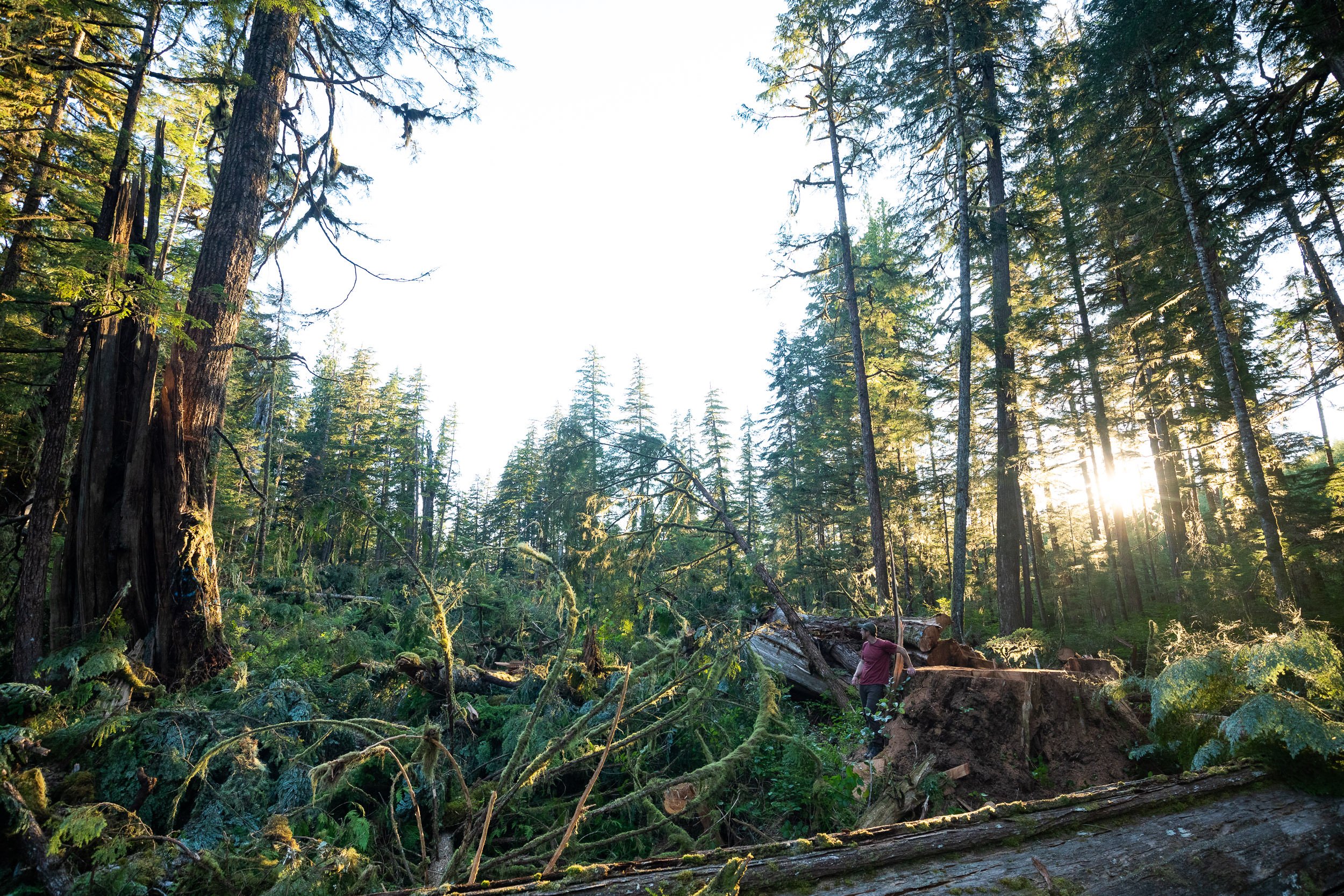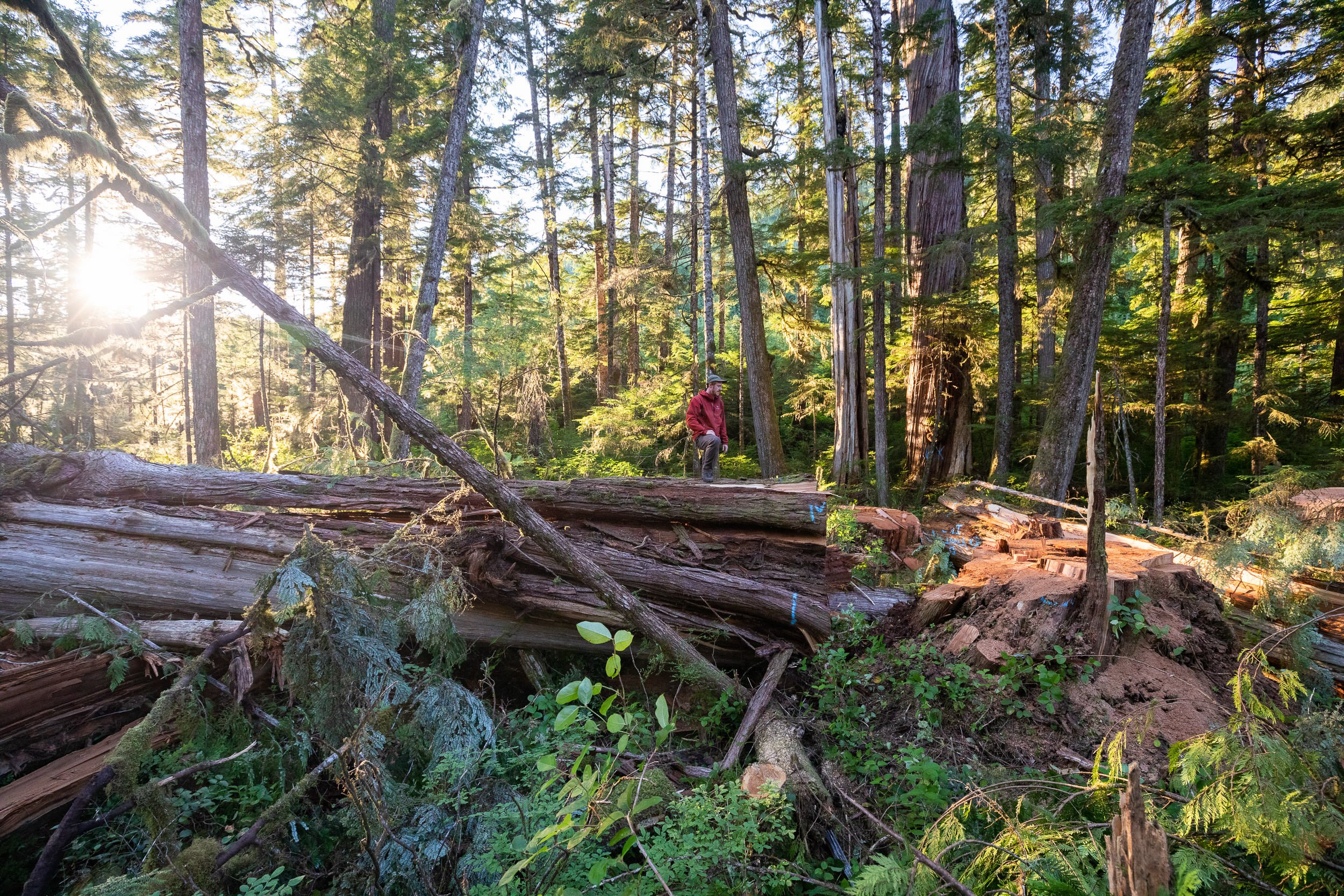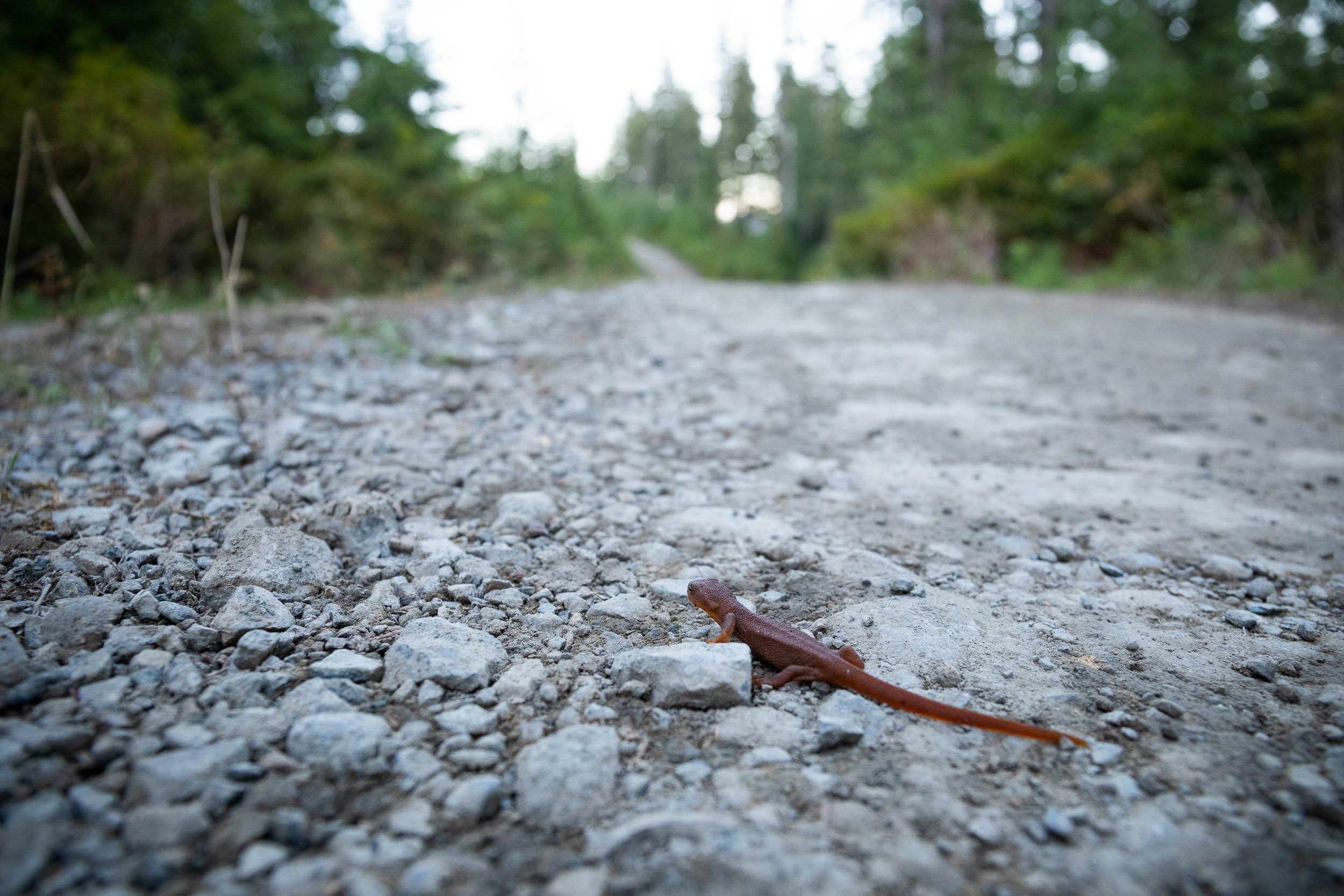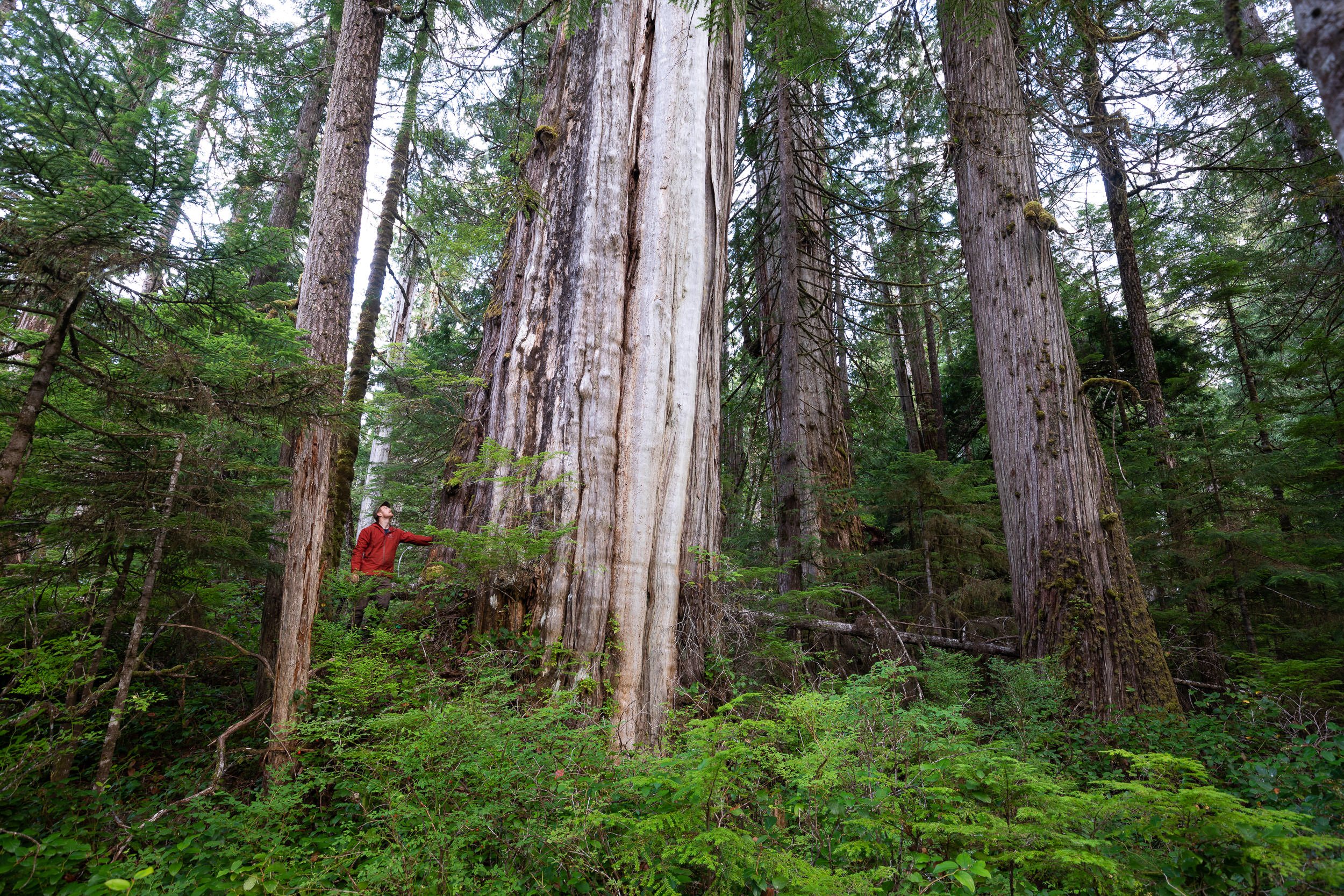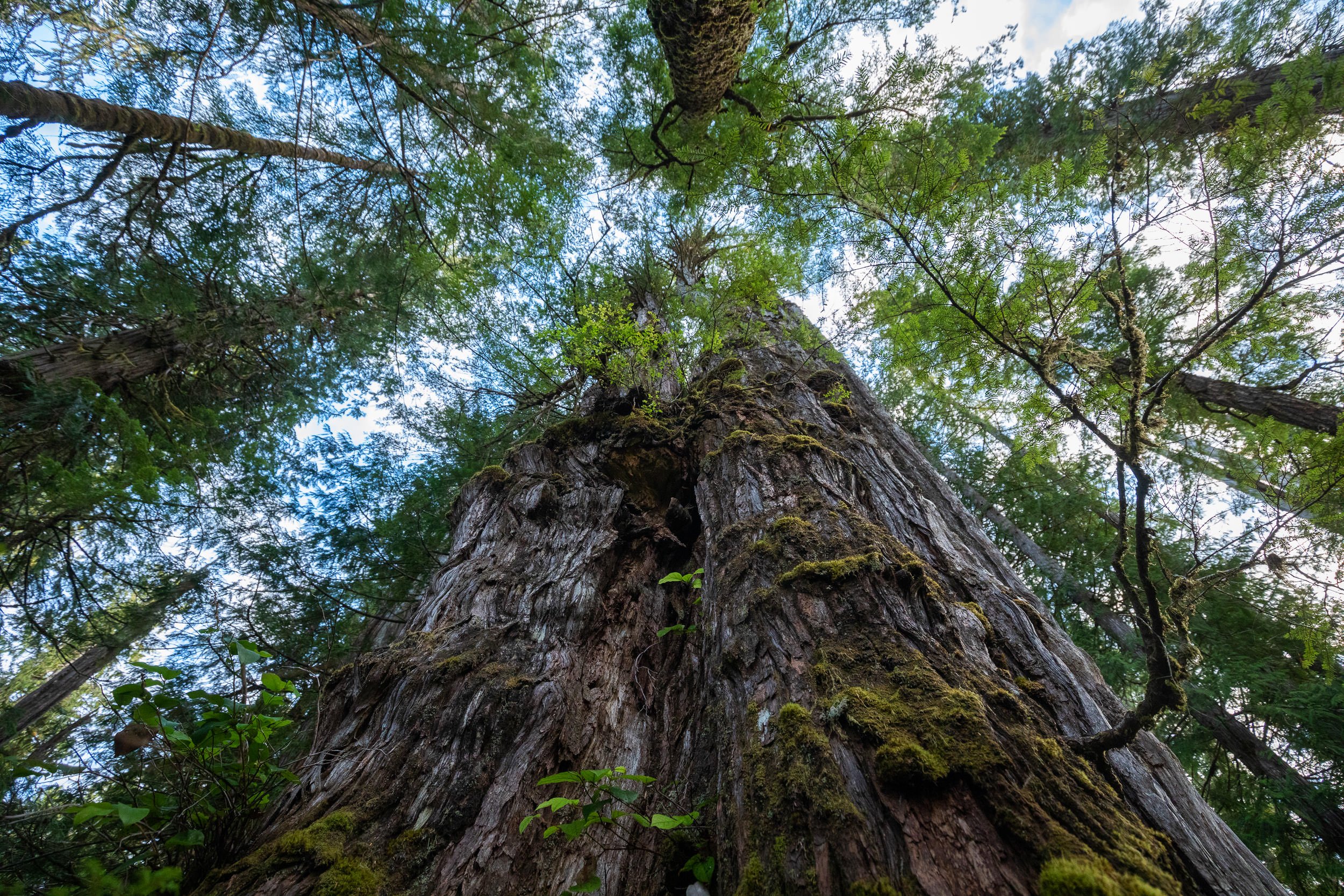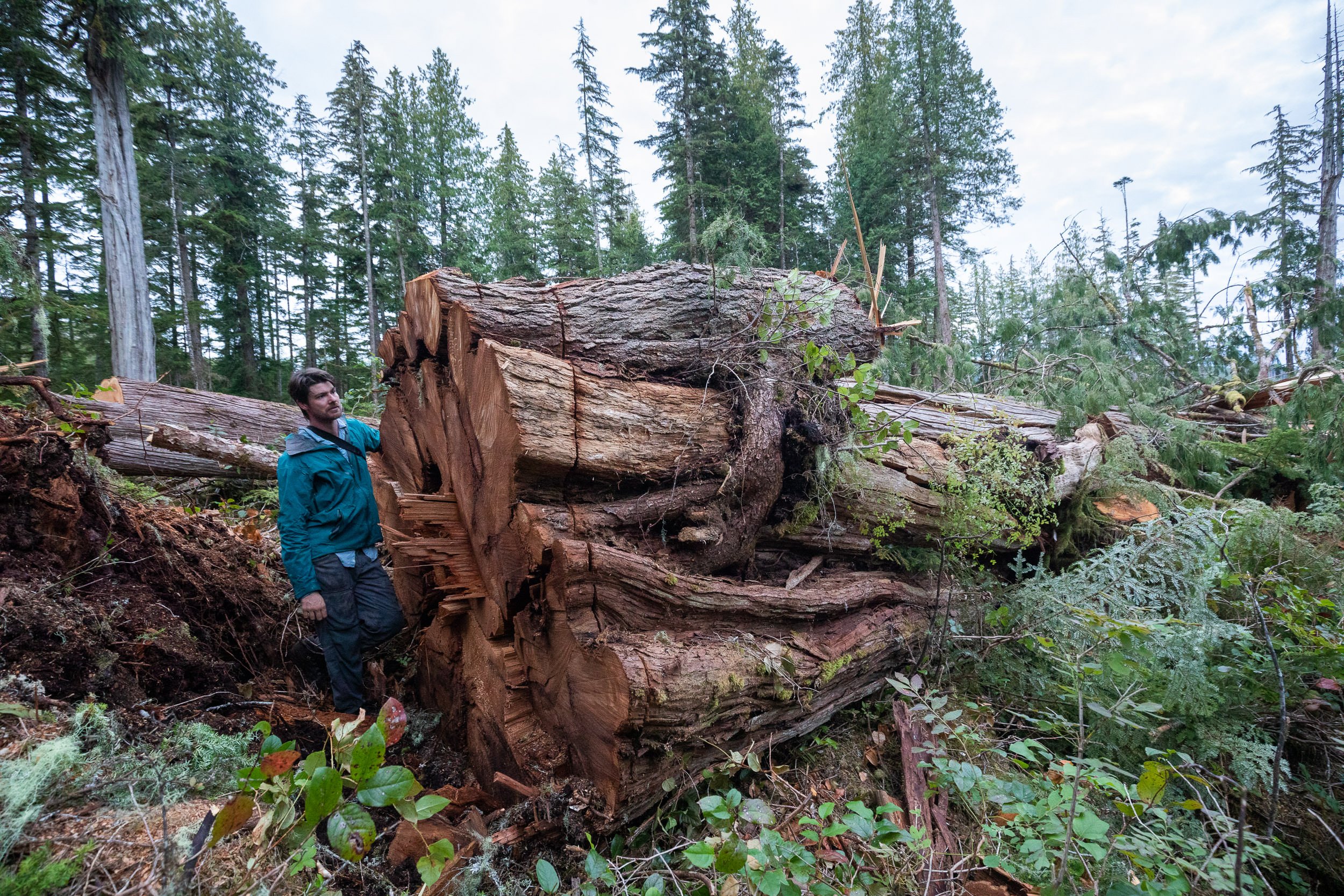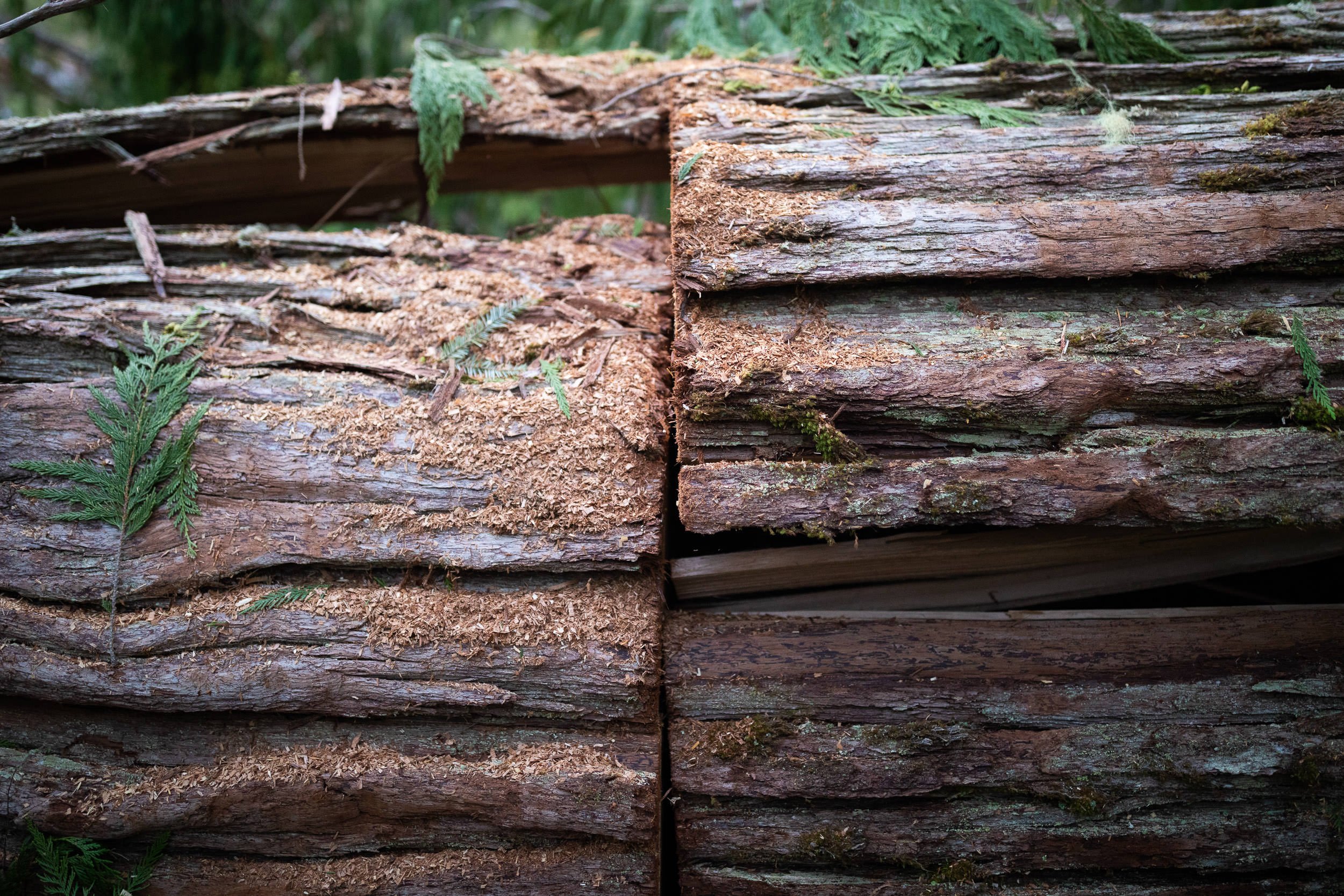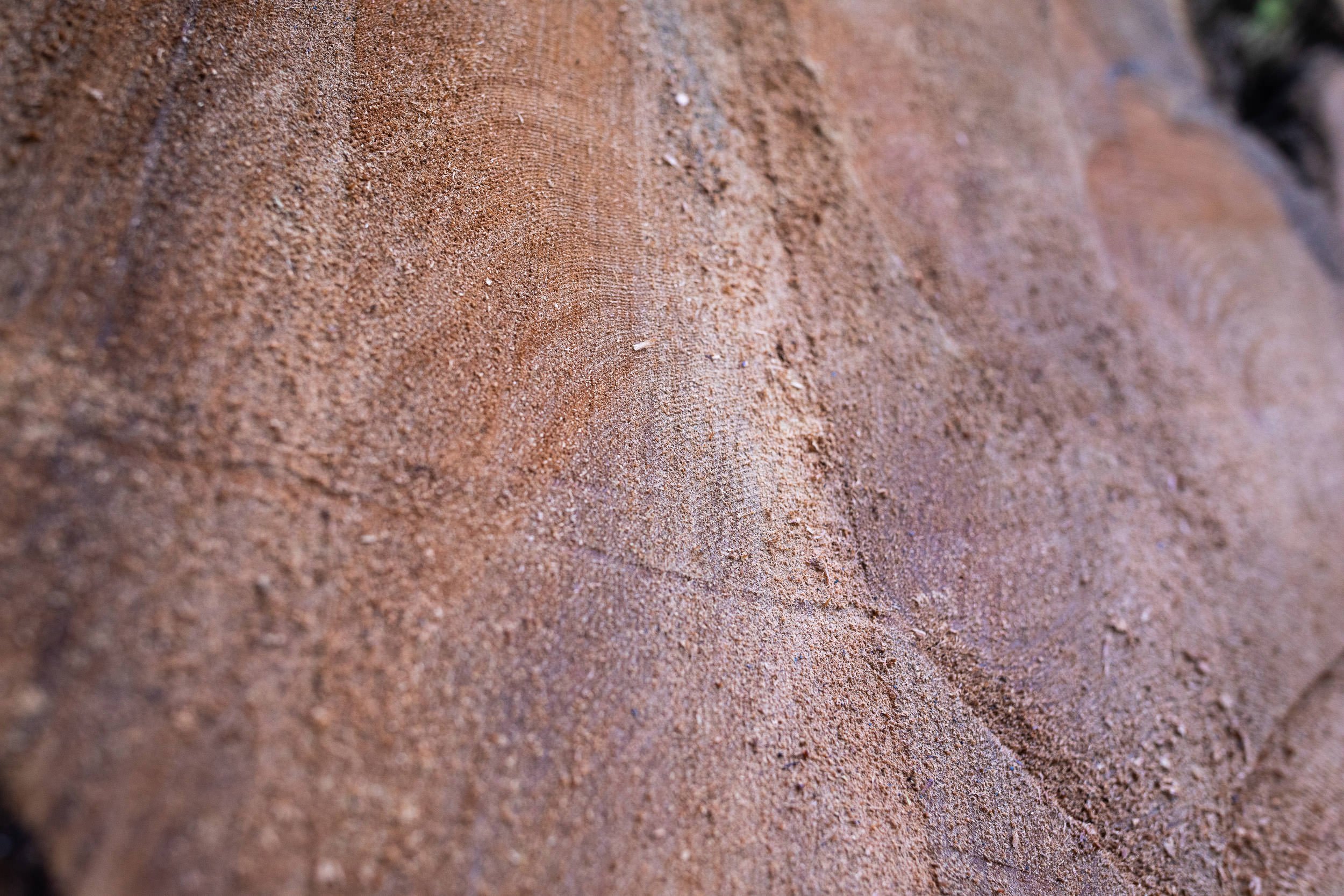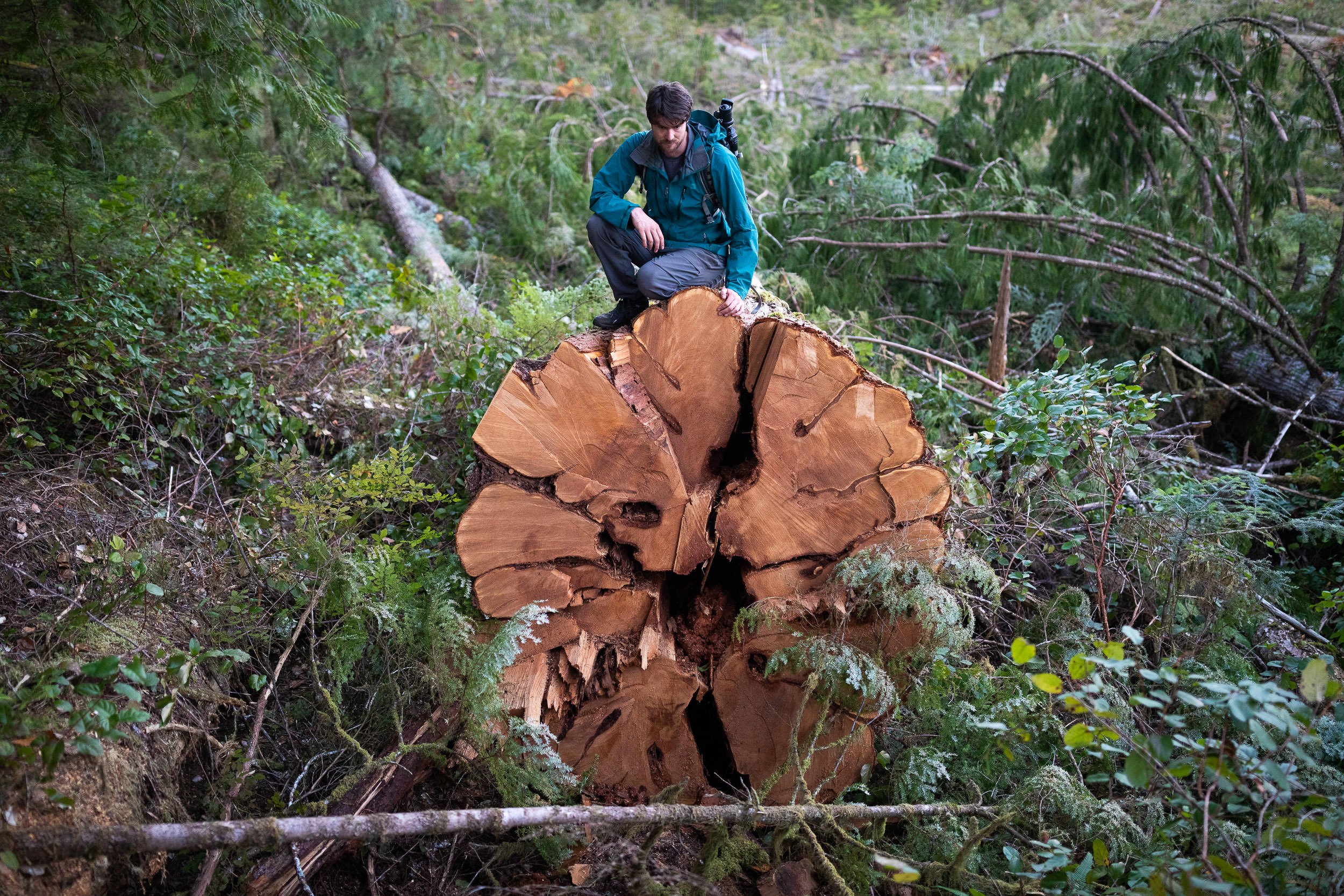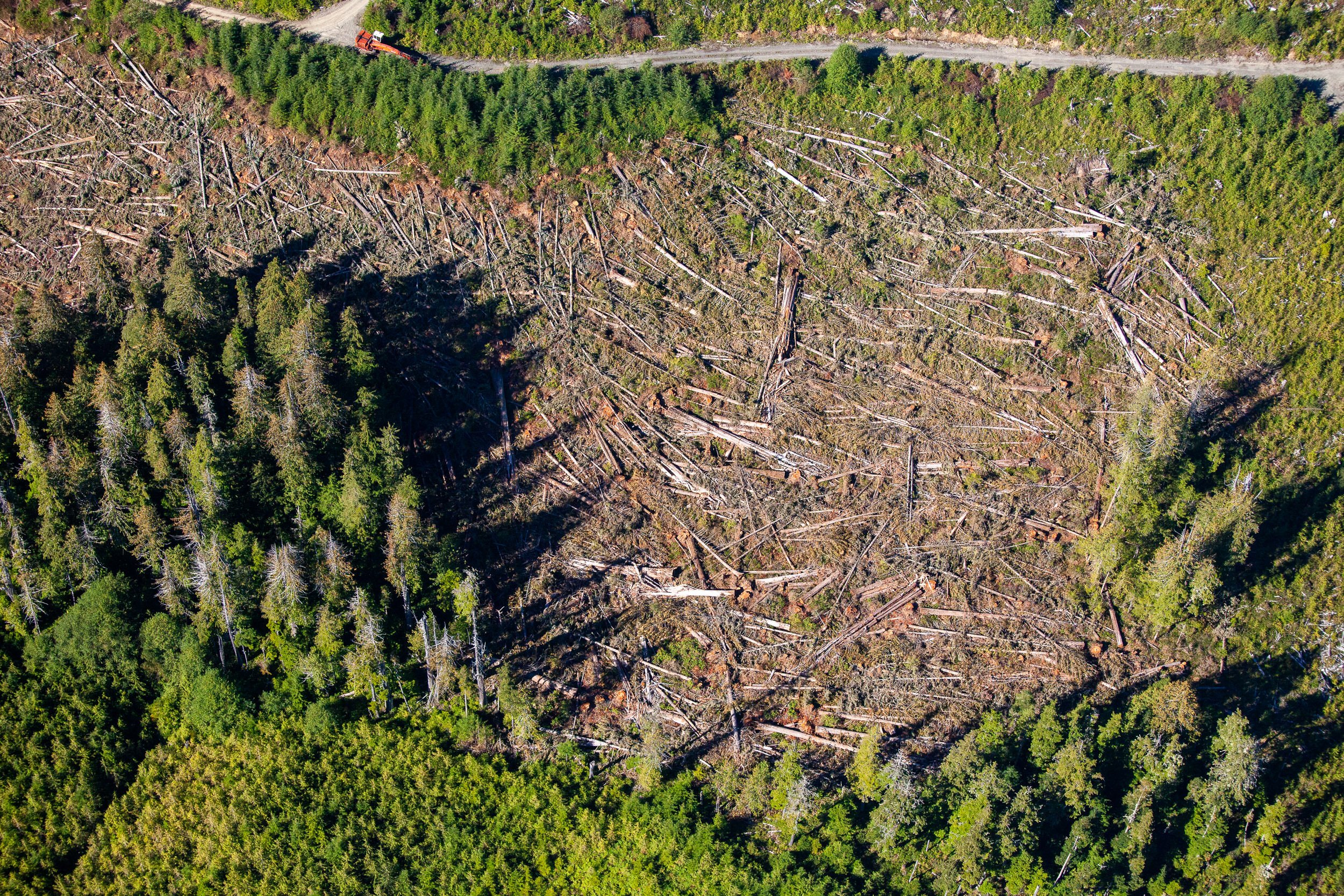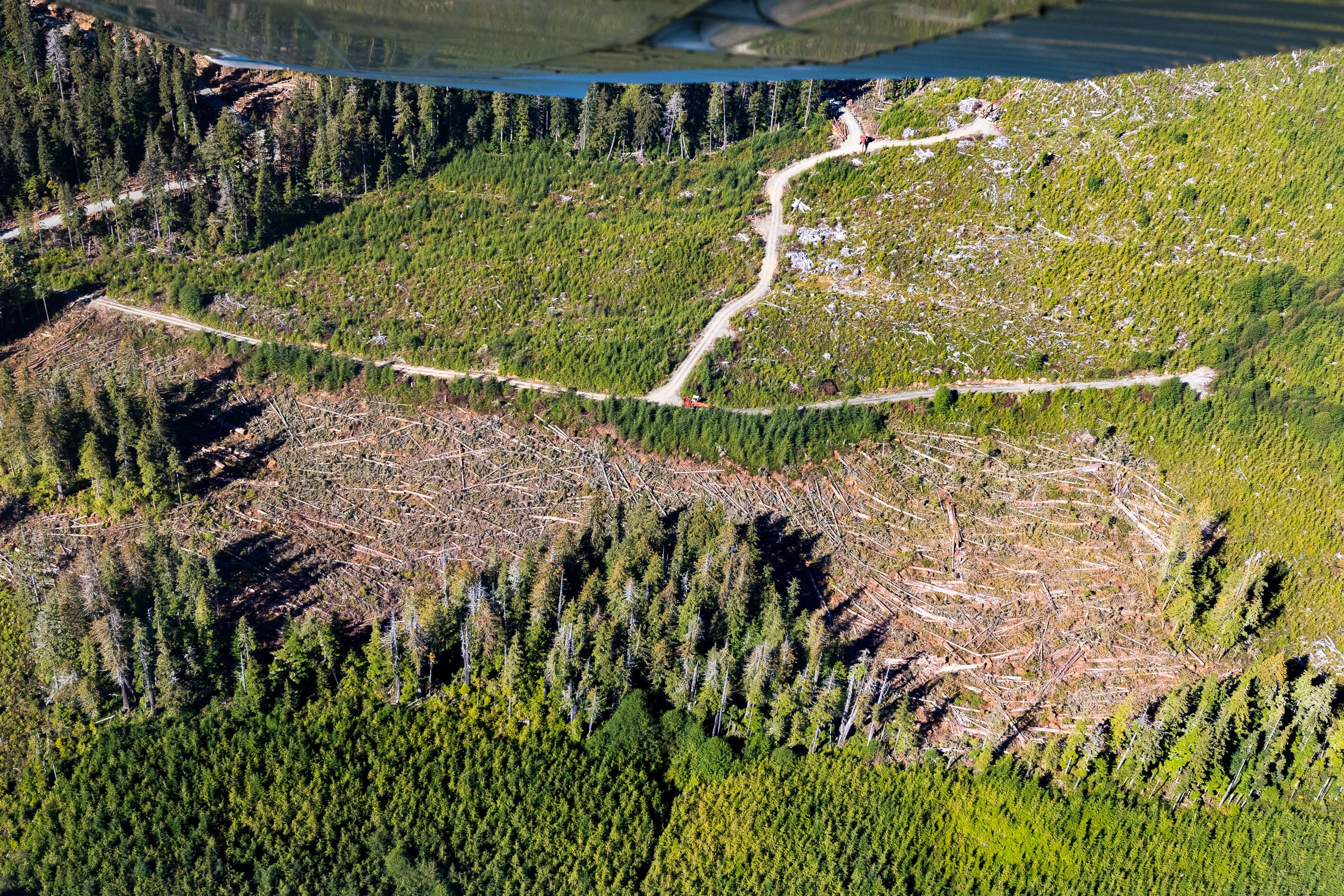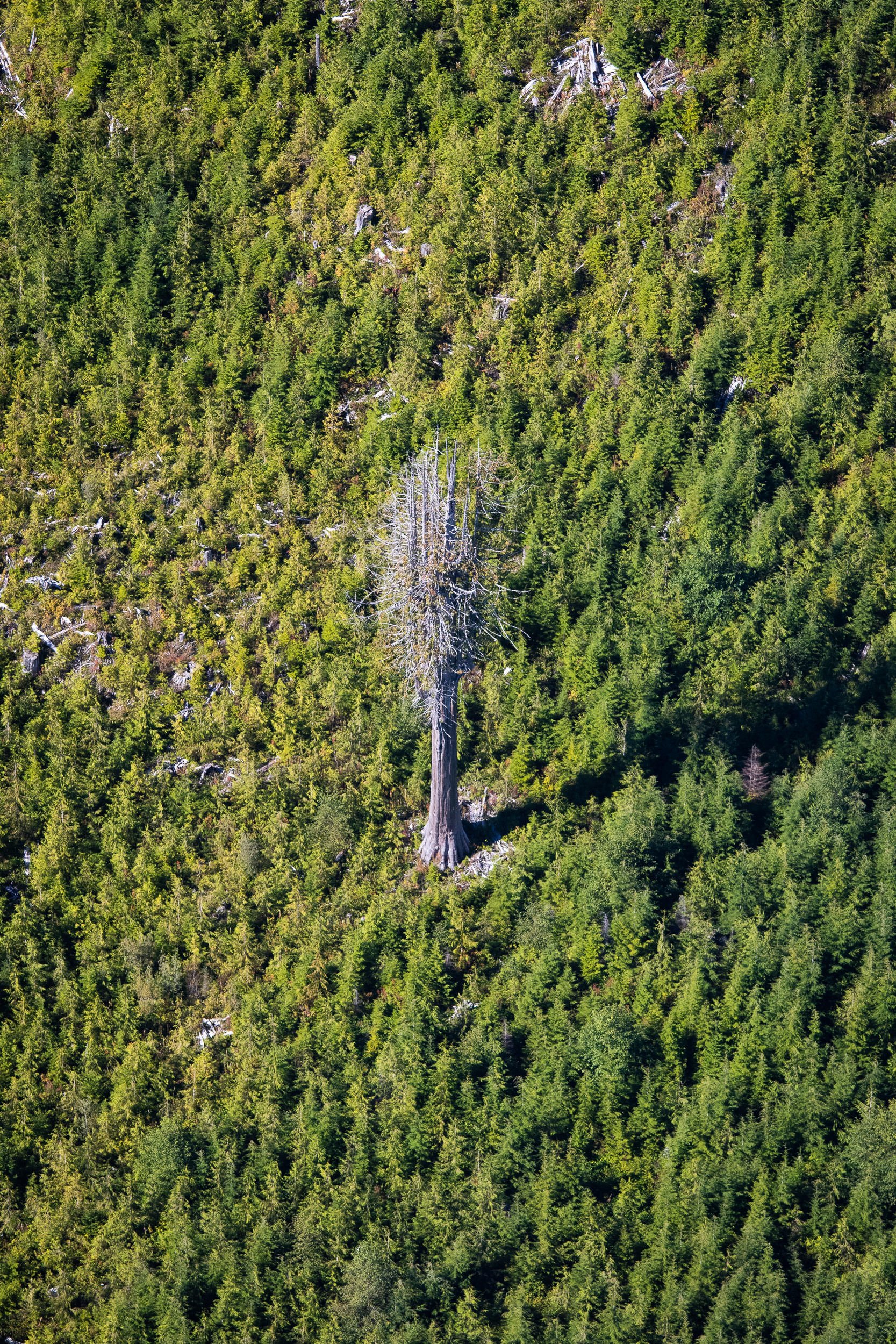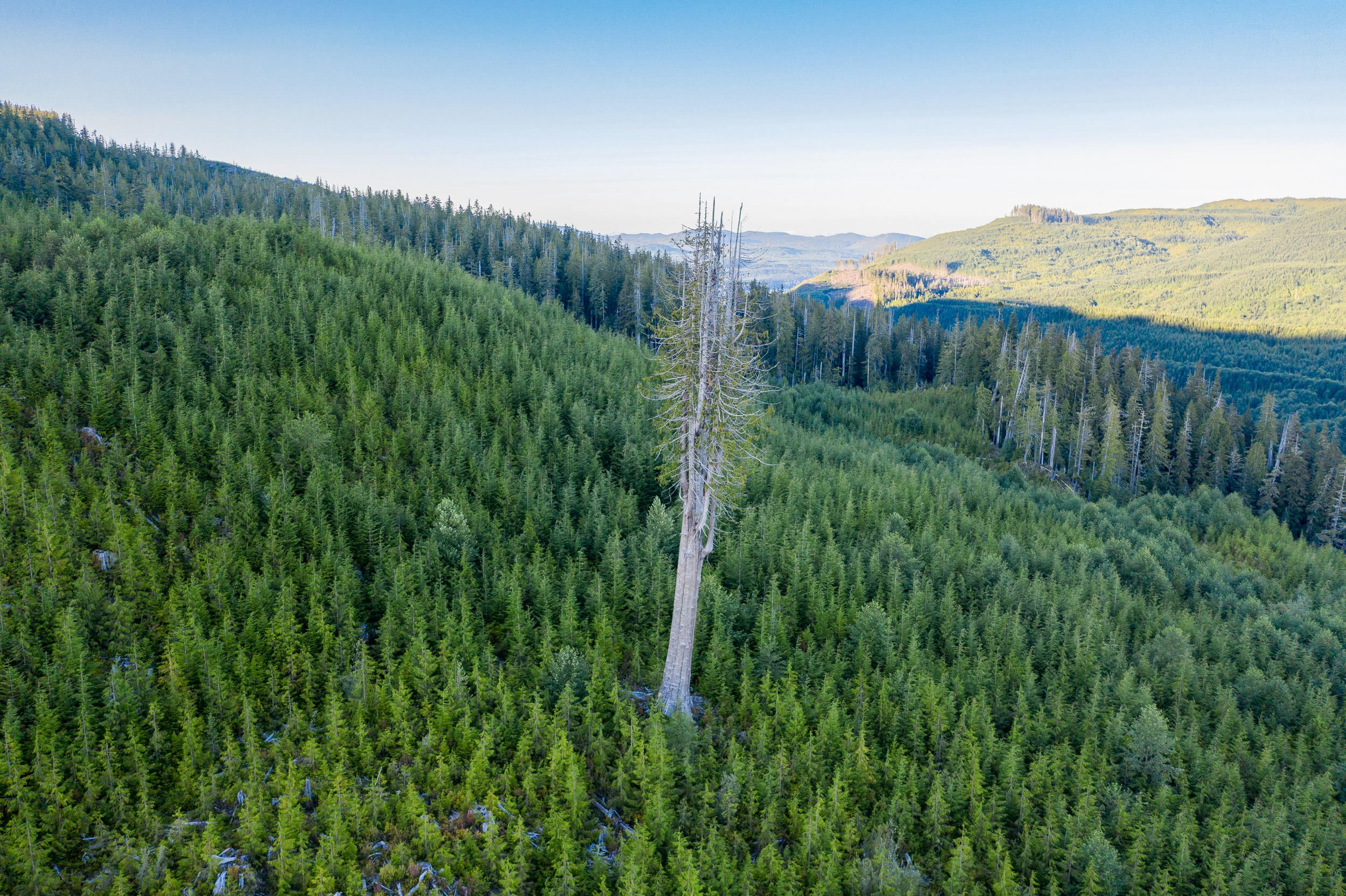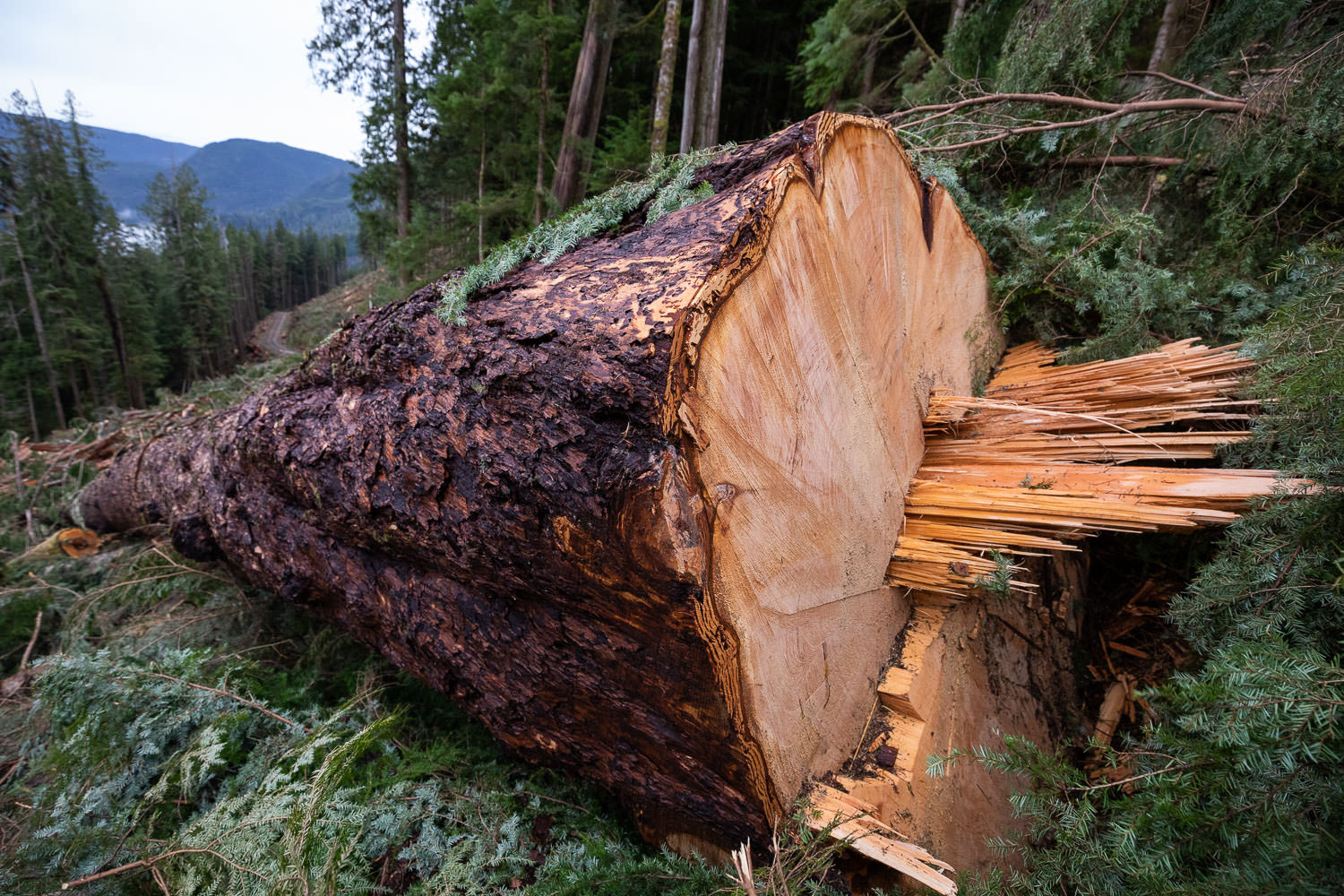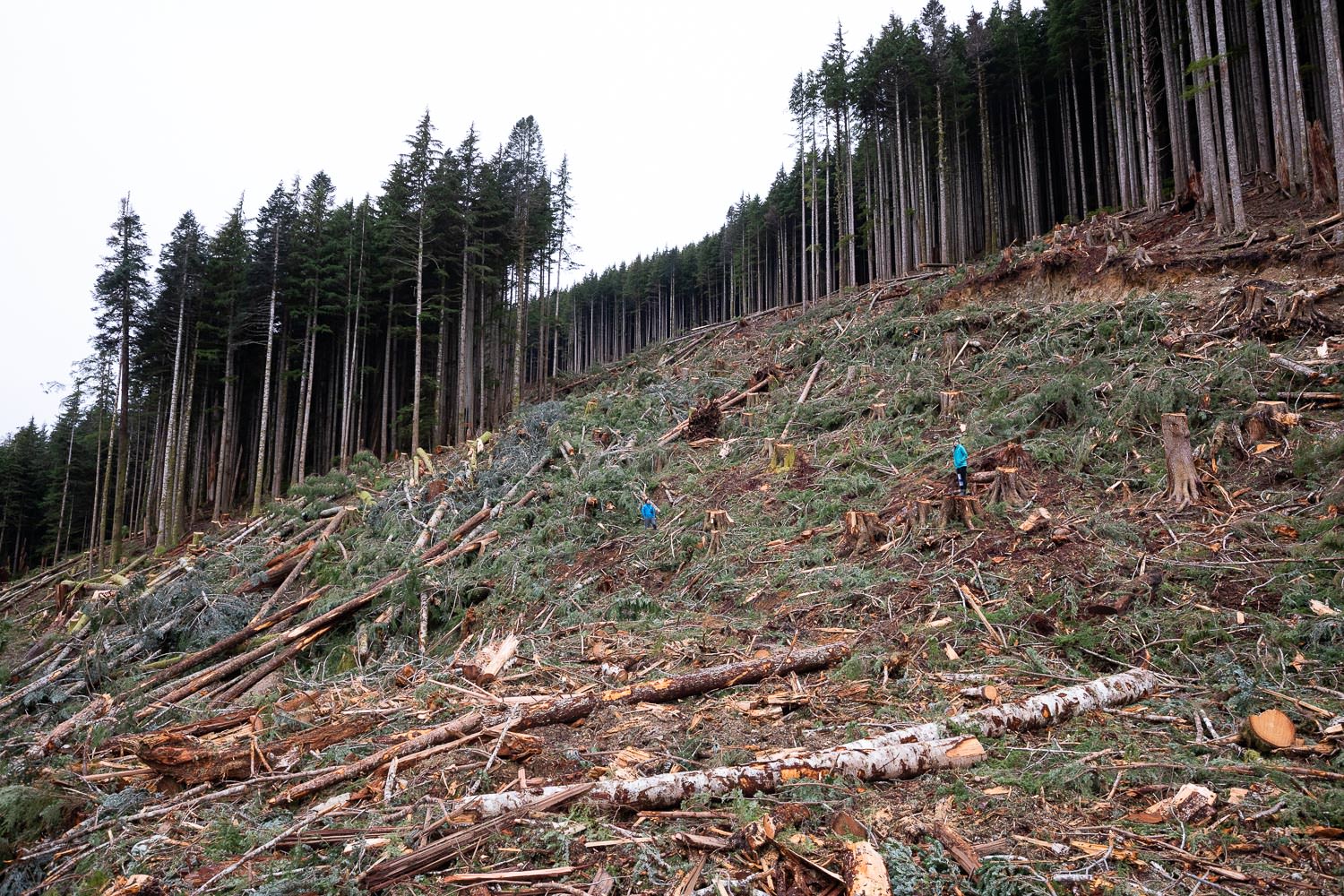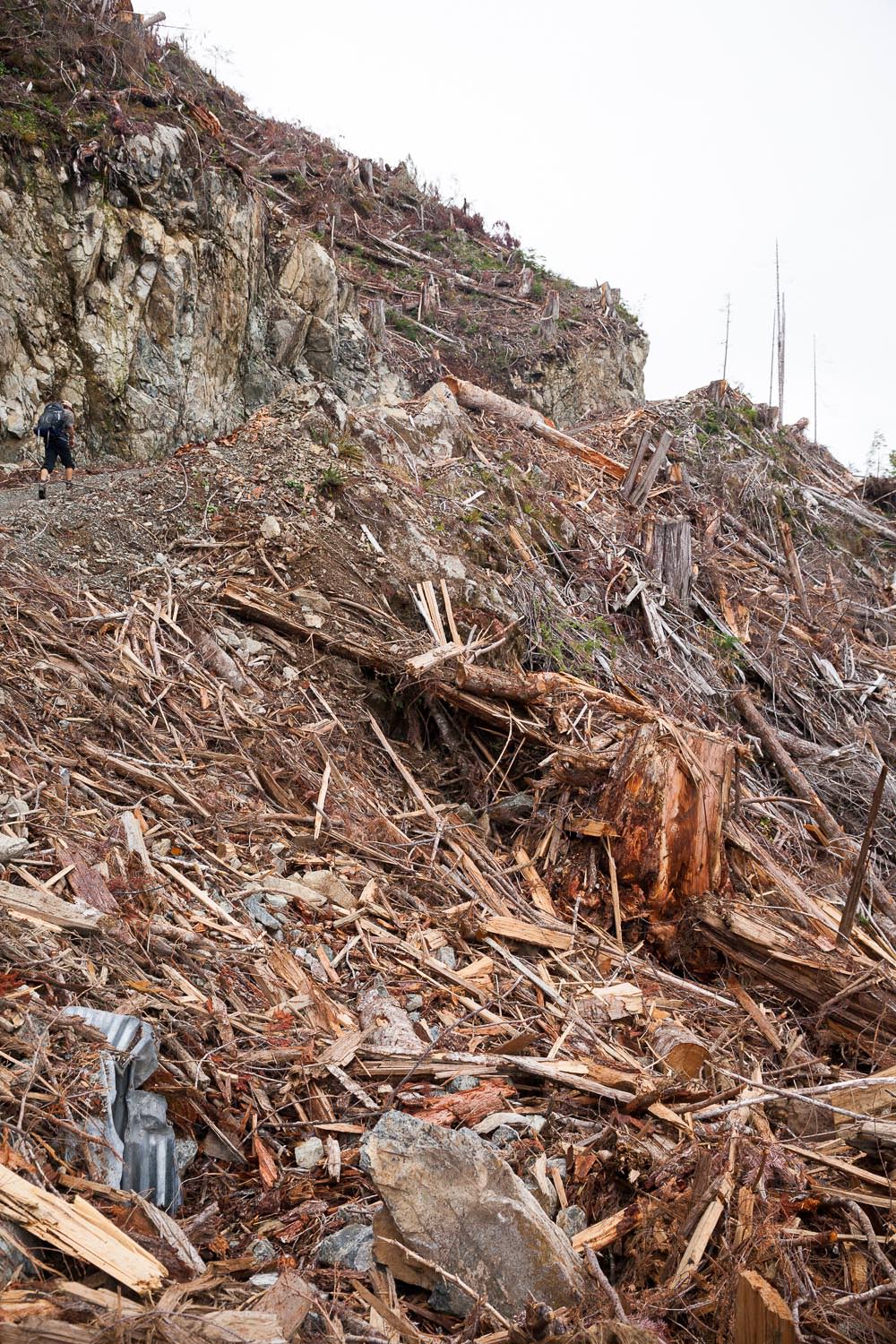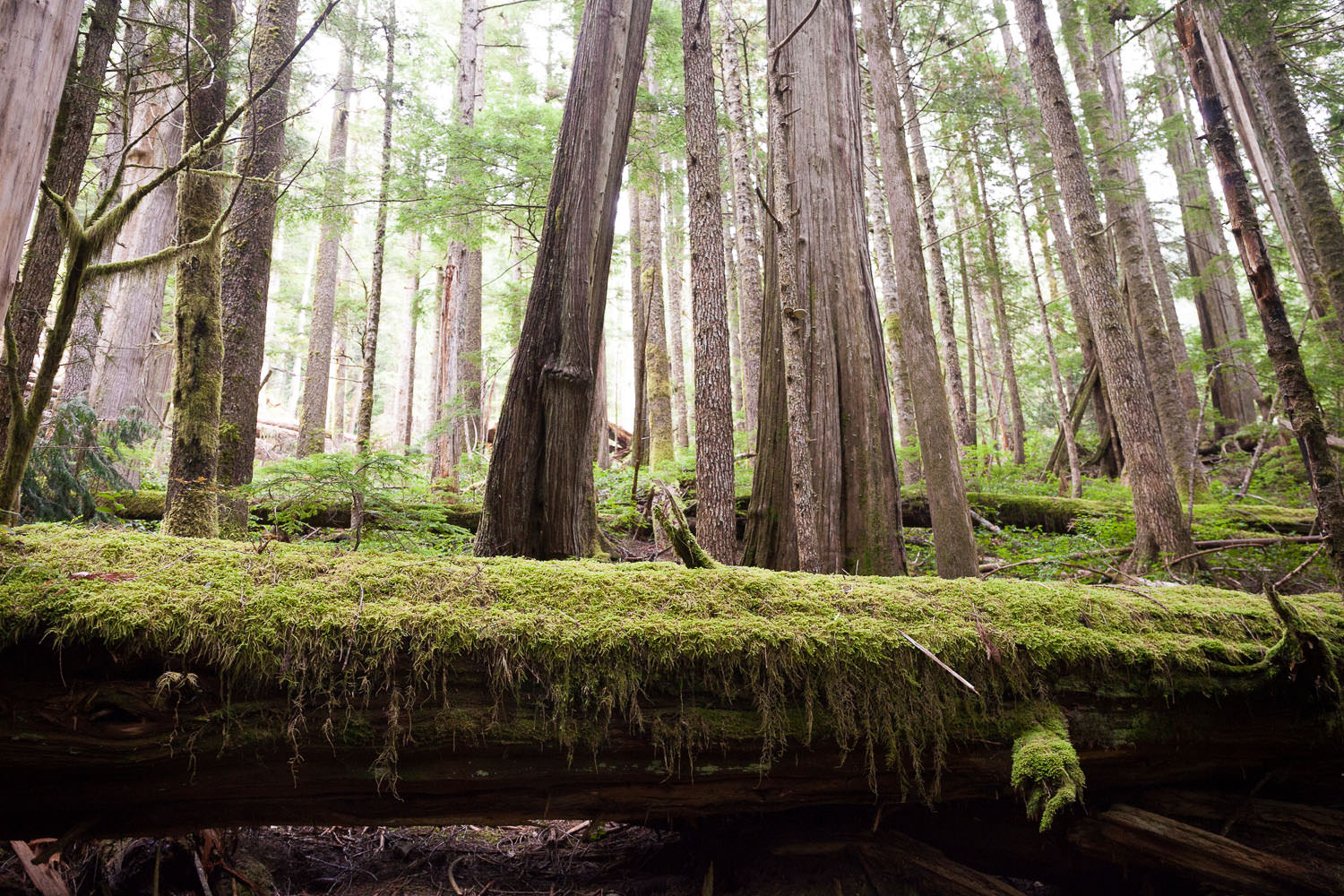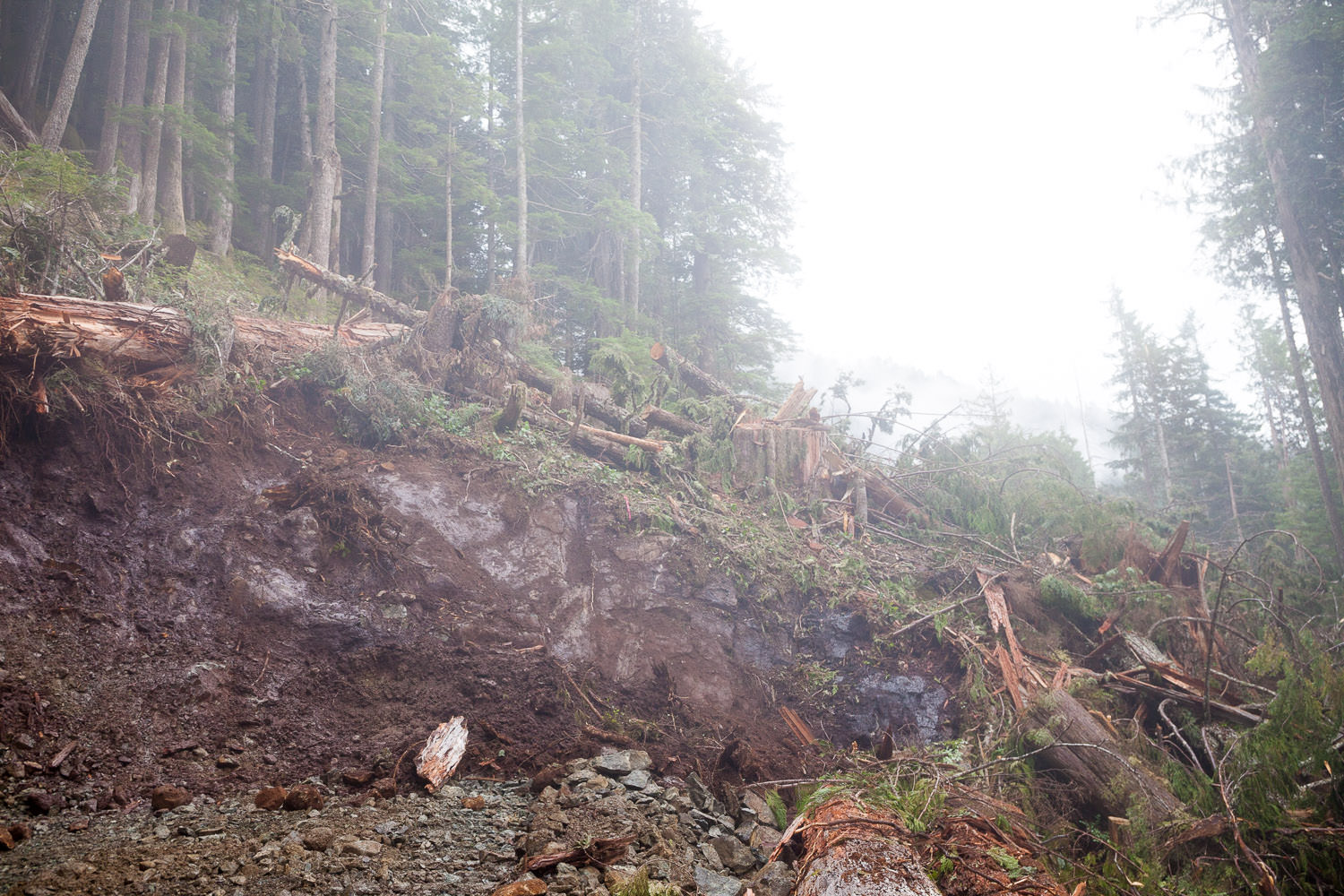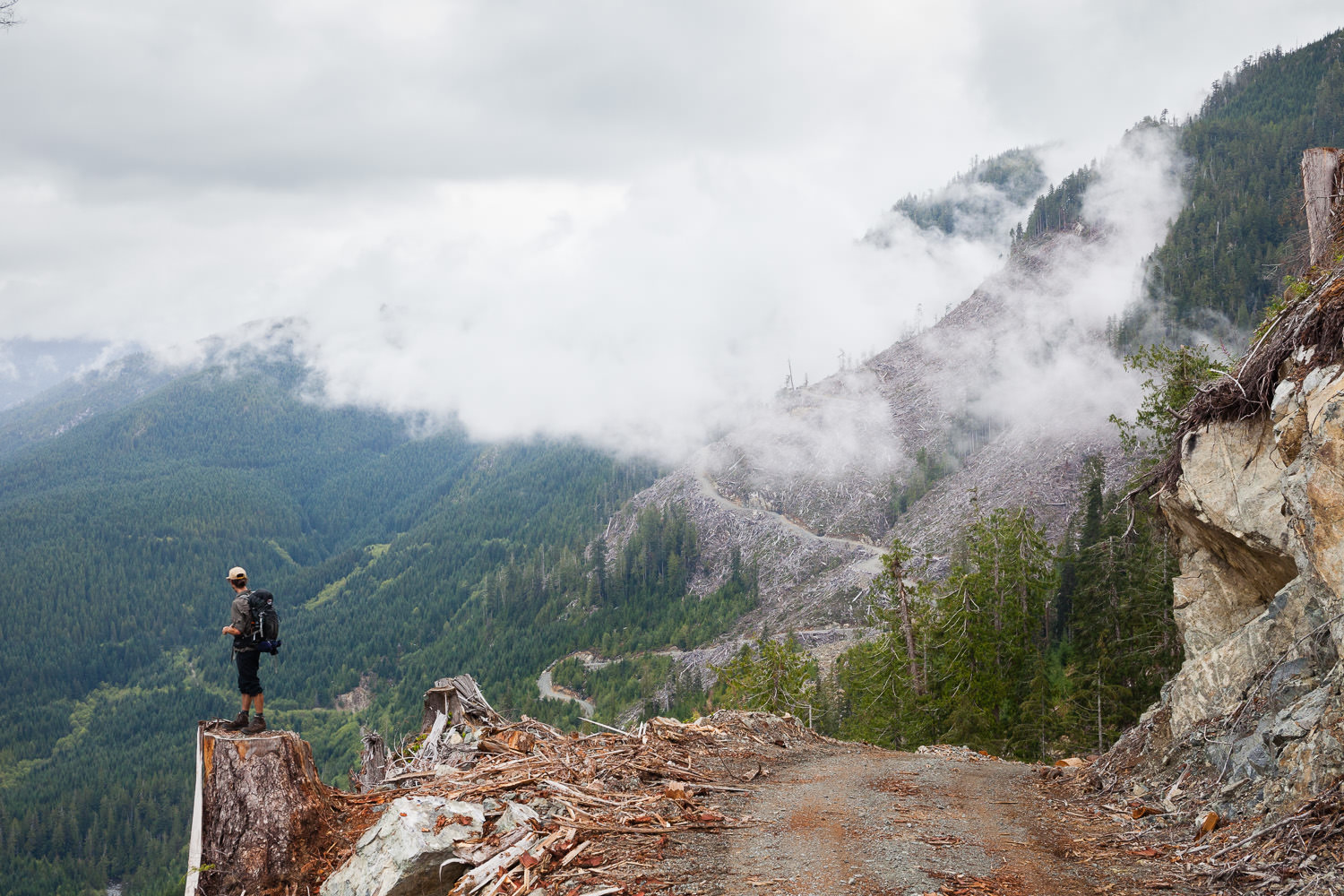An ancient cedar tree lies prone amidst the destruction of an old-growth clearcut with myself on the trunk for scale. Likely 700+ years old, this tree and scores of others like it would have been standing just before we arrived that day.
However, in 2022, Western Forest Products began clearcutting 25 hectares (roughly 50 football fields) from an incredible old-growth cedar grove in Quatsino territory on northwestern Vancouver Island, BC.
I was floored by the sheer number of monumental redcedars cut down, some nearly 10 feet (3 m) wide. It’s the most shocking example of industrial old-growth logging I’ve witnessed since the logging in the Caycuse and Nahmint Valleys.
Despite being home to scores of giant trees, this particular grove — and likely hundreds of others — was not included in the BC government’s independent old-growth science panel, the Technical Advisory Panel’s (TAP) original logging deferral recommendations due to the forest being incorrectly labeled as 210 years old in the province’s forest inventory database (40 years younger than the province’s 250-year-old threshold for being considered old-growth on the coast).
The TAP made clear recommendations to the BC government that on-the-ground assessments should be used to identify and defer big-tree old-growth forests that were missed in their preliminary analysis. So far, despite requests from us and others, that has not been happening.
As the BC government moves to protect 30% of BC by 2030, it’s imperative that they set ecosystem-based targets based on science that prioritize the most at-risk old-growth forests, such as those with big trees, for protection.
They must also commit significant provincial funding and conjoin it with major federal funds to support sustainable economic alternatives for First Nations linked to deferrals and new protected areas.
Otherwise, irreplaceable ancient forests like this one will continue to fall.
This photo series was created with support from the Trebek Initiative.
SPEAK UP! SEND a MESSAGE to the BC government calling for the protection of endangered old-growth forests.
News Coverage
Ancient Forest Alliance - Media Release
The Guardian (UK) - Canada: images of felled ancient tree a ‘gut-punch’, old-growth experts say
CHEK News video - Ancient Forest Alliance renews call for provincial funds to defer old-growth logging
My Comox Valley Now - Old growth cedars harvested because of database errors, says environmental group
The photos and story became the TOP STORY on Apple News for a day as well as the most read article on The Guardian for 48 hours.

